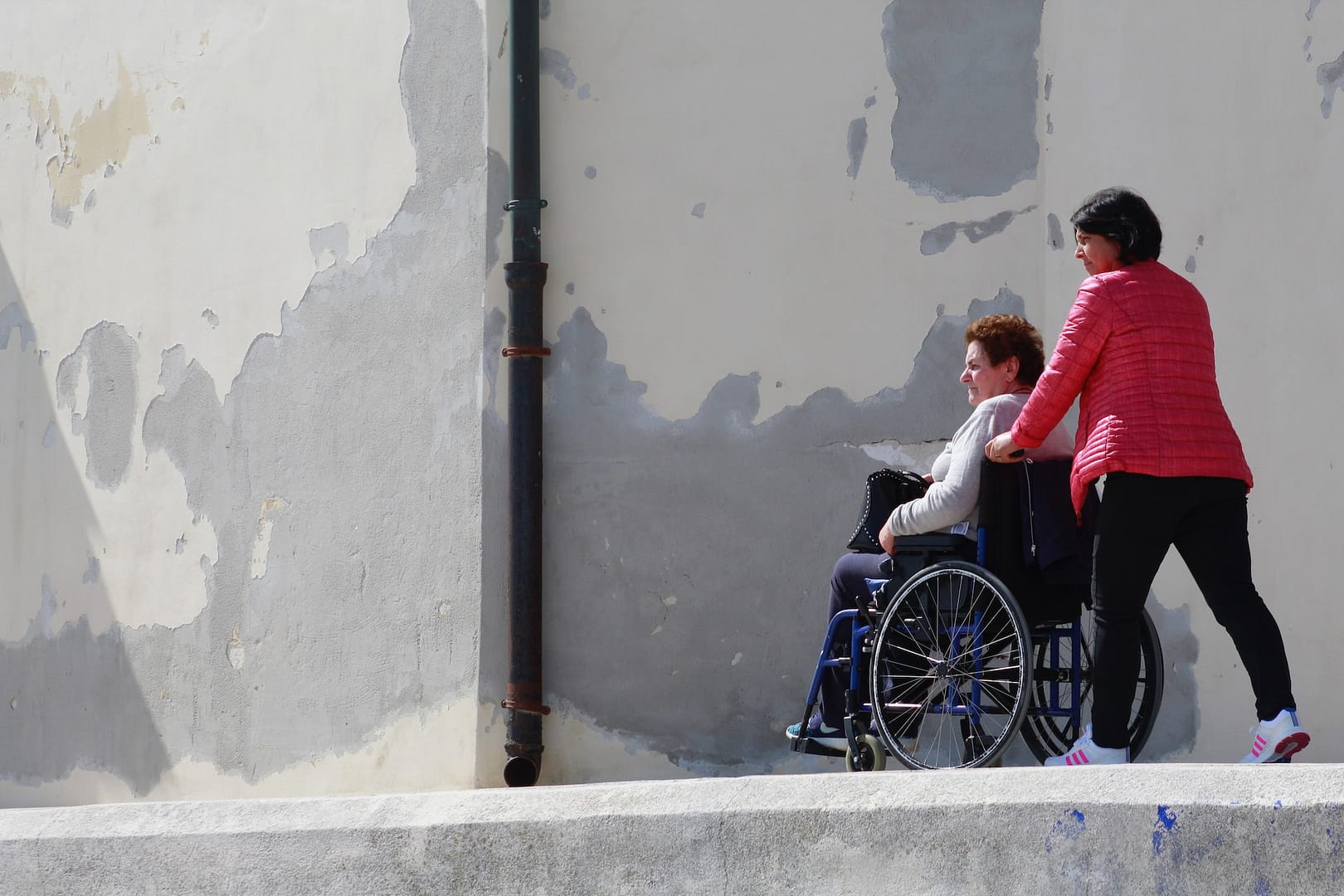In the hustle and bustle of our daily lives, we often take for granted the intricate ballet that is traffic on the road. We manoeuvre our vehicles with a sense of routine, a dash of confidence, and a sprinkle of impatience. Yet, amid this orchestrated chaos, there exists a category of individuals whose lives hang in the balance each time they venture onto the asphalt stage: vulnerable road users. The impact of impaired visibility on these individuals is an issue that deserves our attention and concern. In this article, we will explore the various facets of this topic, from understanding who these vulnerable road users are to identifying which road users are most difficult to see when reversing. We will also explore how to start a road traffic accident claim with us at National Claims.
Understanding Vulnerable Road Users
To comprehend the impact of impaired visibility on vulnerable road users, we must first identify who falls into this category. Vulnerable road users encompass a diverse group of individuals who are at higher risk when navigating the streets. They include pedestrians, cyclists, motorcyclists, and children. Let’s delve into each of these categories to gain a better understanding.
Pedestrians
Pedestrians are the unsung heroes of the road. They are individuals on foot, using their own two legs as their mode of transport. It could be a person walking to work, a child heading to school, or a senior citizen taking a leisurely stroll. Pedestrians are most vulnerable when it comes to impaired visibility, primarily due to their lack of protection. Without the shield of a vehicle, they are exposed to the elements, and more importantly, to the unpredictability of drivers’ actions.
Cyclists
Cyclists, often seen zipping through traffic on their bicycles, form another subset of vulnerable road users. They rely on the power of their legs to pedal forward. The absence of an outer shell like that of a car or motorcycle leaves them susceptible to accidents when visibility is impaired. Moreover, their relatively smaller size makes them less noticeable to drivers, particularly in challenging conditions.
Motorcyclists
Motorcyclists, like cyclists, operate vehicles without the protective cocoon of a car. Riding on two wheels grants them a sense of freedom, but it also means they face a higher degree of risk. Their reduced size compared to cars and trucks, along with the lack of substantial protection, makes them more prone to accidents when visibility is compromised.
Children
Children, the future generation, also fall within the category of vulnerable road users. Their size, coupled with their natural curiosity and sometimes unpredictable behaviour, makes them highly susceptible to accidents when visibility is impaired. This is a sobering reminder of the importance of clear visibility for drivers.
The Complexity of Impaired Visibility
Now that we understand who the vulnerable road users are, let’s explore the complexities of impaired visibility and the role it plays in road safety. Visibility issues can arise from various factors, including adverse weather conditions, inadequate lighting, blind spots, and even the human factor of distracted or fatigued driving. These issues affect all road users but have a more profound impact on the vulnerable.
Adverse Weather Conditions
Imagine a dense fog enveloping the road, or a torrential downpour reducing visibility to a mere few metres. In such conditions, the road becomes a treacherous maze, and identifying pedestrians, cyclists, and motorcyclists becomes increasingly challenging. The reduced visibility greatly heightens the risk of accidents, making it imperative for drivers to exercise extra caution.
Inadequate Lighting
Insufficient or poorly placed street lighting can turn the night into a hazardous time for all road users, especially for those without the protection of a vehicle. For pedestrians, cyclists, and motorcyclists, the lack of proper illumination can lead to a perilous journey.
Blind Spots
Every vehicle has blind spots – areas around the vehicle that are not visible to the driver through mirrors or direct line of sight. Blind spots are a significant concern when it comes to the impact of impaired visibility. For instance, when a driver is about to make a right turn, they may not see a cyclist approaching from the right rear. This lack of visibility can result in tragic accidents.
Distracted or Fatigued Driving
The human factor is another critical element in impaired visibility. Drivers who are distracted or fatigued may not be as attentive as required, thereby increasing the risk to vulnerable road users. A momentary lapse in concentration could lead to life-changing consequences.
Identifying the Most Difficult Road Users to See When Reversing
While all vulnerable road users face increased risk in scenarios of impaired visibility, some are particularly challenging to spot when a vehicle is reversing. This is a situation where the risk of accidents is significantly elevated. Without real-life examples or case studies, let’s analyse the vulnerable road users who are most difficult to see when a vehicle is reversing, drawing insights from the UK.
Pedestrians at Crossings
In the UK, as in many other countries, pedestrians have the right of way when they are at a crossings. However, drivers may not always notice them, especially when reversing from a parking space or driveway. The reason for this is often the limited field of vision when a car is in reverse gear. Pedestrians waiting at crossings are particularly vulnerable in these situations.
Cyclists in Urban Areas
Cyclists in urban areas, where traffic is congested and parking spaces are limited, face a higher risk when vehicles are reversing. The confined space and frequent stops and starts make it challenging for drivers to keep track of the movements of cyclists. Without a doubt, cyclists in such situations are at an increased risk of collisions when drivers reverse without due caution.
Children Near Residential Areas
Children playing near residential areas pose a significant challenge when vehicles are reversing. Their small stature and unpredictable movements make them hard to spot. Accidents involving reversing vehicles and children are heart-wrenching and tragic. Therefore, vigilance is crucial when driving in areas with children nearby.
Making a Road Traffic Accident Claim with National Claims
When accidents involving impaired visibility do occur, seeking compensation for the victims is of paramount importance. National Claims, a leading UK-based claims management company, is dedicated to assisting those affected by road traffic accidents. If you or a loved one has been a victim of an accident due to impaired visibility, making a claim with National Claims can provide the support you need.
Contact National Claims
The first step in the claims process is to get in touch with National Claims. You can reach us through our website, hotline, or visit one of our local branches across the UK. Our friendly and experienced team will guide you through the initial steps and help you assess your claim.
Claim Assessment
Once you’ve made contact, our experts will assess the details of your accident and your eligibility for a claim. We will collect all the necessary information to build a strong case on your behalf.
Legal Representation
National Claims works with a network of skilled solicitors who specialise in road traffic accident claims. Your case will be assigned to a solicitor with relevant expertise, ensuring that your claim is in capable hands.

Conclusion
The impact of impaired visibility on vulnerable road users is an issue of profound significance. It affects a diverse group of individuals, including pedestrians, cyclists, motorcyclists, and children. While impaired visibility is a challenge for all road users, some are particularly difficult to see when vehicles are reversing, as observed in the UK context.
Mitigating the impact of impaired visibility involves a multifaceted approach, encompassing driver education, improved road design, vehicle technology, and public awareness campaigns. Furthermore, it’s essential to consider the broader societal impact, including healthcare costs, economic losses, and the emotional toll.
To make our roads safer, it’s crucial for all of us to recognize the issue of impaired visibility and work collectively to address it. By doing so, we can help ensure that vulnerable road users can move about our streets with the safety and security they deserve, minimising the risk of accidents and tragedies. Road safety is a shared responsibility, and the well-being of all road users depends on our collective efforts. Additionally, if you’ve been a victim of a road traffic accident due to impaired visibility, National Claims is here to support you in your journey to seek compensation and justice.
Contact us to start your claim today and speak to one of our claims specialists to help you get started.
Click below to see why we are one of the most trusted claims management companies in the UK.

We’re proud of our excellent customer reviews
We thrive on delivering exceptional service and ensuring our clients’ satisfaction. Don’t just take our word for it. Check out some of our independent reviews to see what our clients have to say.
Excellent

This firm is excellent, they sorted out my car pay out and injury claim very fast, they always communicate with you all the time.

My accident case was dealt with confidence and with great result of the outcome, especially James kept me informed all the time.

I was very impressed at the way my inquiry was treated. I was listened to attentively and everything I needed to know was explained to me.






